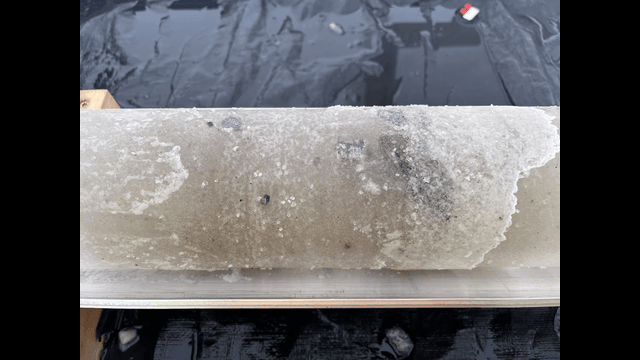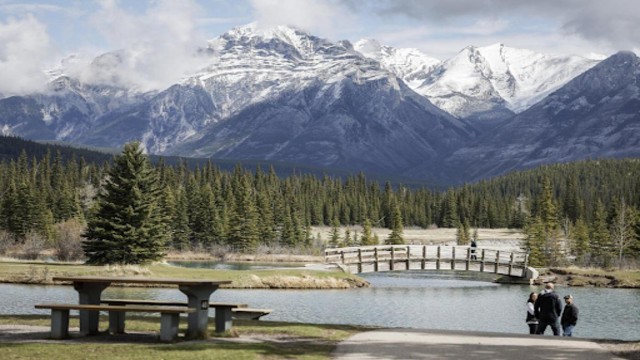
Small rocks were found inside the ice core. (University of Manitoba)
Researchers from the University of Manitoba have drilled a 613-metre-deep ice core at Axel Heiberg Island in Nunavut. This is the deepest ice core ever collected in Canada. Ice cores hold clues about past climates by trapping tiny air bubbles and particles as the ice forms.
David Babb, one of the lead researchers, said, “By analyzing this ice core, we should get a 10,000-year record of climatic conditions over the Canadian Arctic.” He added, “This is the first time we’ve been able to do something like this.”
New technology for deeper climate studies
The project, called the Muller Ice Core Project, uses new drilling tools and methods. These advances helped the team drill deeper than ever before in Canada’s Arctic. Babb explained this ice core will help scientists learn about changes in Arctic sea ice over thousands of years.
“We’ll be performing an analysis on this ice core that will also give us a roughly 10,000-year record of sort of the variability on high ice conditions and low ice conditions,” Babb said. “With this one ice core, we will actually get quite a bit of science out of it.”
A career-long dream for the project leader
Dorthe Dahl-Jensen leads the project and has worked for many years to gather such a valuable ice sample. She said she hopes to learn when sea ice disappeared during past warm periods and how old the ice cap really is.
“Do we have remains of the ice cap that covered North America during the glacial period? Or is it a newer ice cap that started to grow in our present warm inter-glacial (period)?” Dahl-Jensen asked.
She added, “It becomes more exciting the older the ice is at the bottom because we get a longer history and the coverage of ice in North America.”
The team also found small rocks inside the ice. Dahl-Jensen explained these rocks help determine how long the ice has covered this area. By studying how much sunlight the rocks received before being covered, they can learn about the ice’s age.
“That’s really exciting and more than I had hoped for,” she said.
Building on past success in Antarctica
Earlier this year, Dahl-Jensen was part of a team that drilled a 2,800-metre ice core in Antarctica. That discovery gave scientists samples dating back more than 1.2 million years, the oldest known climate records on Earth.
“All in all, it’s been super successful,” Dahl-Jensen said. “We’ve made an ambitious plan and until now, it’s been going according to schedule.”
A project years in the making
The project started with meetings in 2018 but paused during the COVID-19 pandemic. Now, it includes researchers from Canada, Denmark, and Australia working together.
The ice cores will be stored at the Canadian Ice Core Laboratory at the University of Alberta. Scientists there will examine three additional 70-metre ice cores. Another team from the University of British Columbia will study greenhouse gases and mercury trapped in the ice.
Babb expects the research will continue for years. “It’s not just a one off, quickly analyze and move on. There’s a lot of research that’s going to come from this ice core,” he said.
He added, “I think it’s a really exciting time, both at the University of Manitoba where we will be doing this analysis, but also for Canada more generally.”
Better climate predictions for Northern communities
Researchers hope the knowledge gained will help make better climate predictions. This can support communities in Northern Canada as they face changing weather and melting ice.















